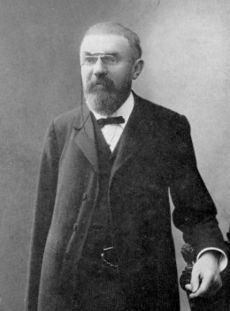| Tikalon Blog is now in archive mode.
An easily printed and saved version of this article, and a link
to a directory of all articles, can be found below: |
|
This article |
| Directory of all articles |
Grigori Perelman
July 6, 2010
In a
previous article (Math Burnout, August 23, 2006), I wrote about the reclusive Russian mathematician,
Grigori Perelman. Perelman was an employee of the Staklov Institute of Mathematics, Saint Petersburg, but he resigned his position several years ago and now lives with his mother in that same city. In 2006, Perelman refused the award of a
Fields Medal,[1-3] considered the Mathematics equivalent of the
Nobel Prize, and now he's refused the million dollar
Clay Mathematics Institute prize for his proof of the
Poincaré Conjecture.[4] Perelman eschewed conventional journal publication by posting his proof in three internet posting in 2002 and 2003.
What is the Poincaré Conjecture, and why was its proof worth a million dollars? In 1904,
Henri Poincaré, a preeminent mathematician whose life bridged the nineteenth and twentieth centuries, had a conjecture on
topology. The conjecture essentially states that the only three dimensional surfaces that can be mapped to a sphere are those with no holes and no boundary (e.g., a coffee cup with a handle cannot be mapped to a sphere). The "no boundary" part means that you can walk all over the surface, reaching every point, and not be stopped by anything. As time went by and a proof (or disproof) was not forthcoming, the conjecture became one of the glamour problems in mathematics, having a cachet similar to a proof of
Fermat's Last Theorem.

Henri Poincaré.
The
Millennium Prize Problems were established in 2000 as an incentive to solve the seven most vexing problems in mathematics:
• P versus NP
• The Hodge conjecture
• The Poincaré conjecture
• The Riemann hypothesis
• Yang-Mills existence and mass gap
• Navier-Stokes existence and smoothness
• The Birch and Swinnerton-Dyer conjecture
Perelman solved the third problem, and it took mathematicians several years to verify the correctness of his proof. Earlier this year, the Clay Mathematics Institute said the prize was his, but he's officially declined the award. Perelman stated that another mathematician,
Richard Hamilton, who had also worked on the problem, had as much claim to the award as he.[4] Hamilton had the idea of using a principle called
Ricci Flow to solve the problem. So, the next time you're faced with a difficult math problem, just "
go with the flow."
References:
- Justin Mullins, "Russian mathematics genius shuns the spotlight," New Scientist Online, August 17, 2006.
- Justin Mullins, "Prestigious Fields Medals for mathematics awarded," New Scientist Online, August 31, 2006.
- Jenny Hogan, "Maths 'Nobel' prize declined by Russian recluse," Nature Online, August 23, 2006.
- Marc Kaufman, "Russian mathematician wins $1 million prize, but he appears to be happy with $0," Washington Post Online, July 2, 2010.
Permanent Link to this article